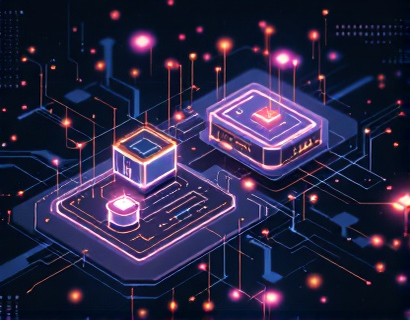Next-Gen Connectivity: Transforming Business and Personal Communication with Advanced Telecom and Internet Solutions
In today's fast-paced digital landscape, the importance of advanced telecommunications and internet solutions cannot be overstated. As businesses and individuals increasingly rely on seamless connectivity for communication, the demand for cutting-edge infrastructure and specialized software solutions has surged. This article delves into the transformative impact of next-gen connectivity, exploring how these advancements enhance communication and empower users to thrive in a digital world.
The Evolution of Telecommunications
The telecommunications industry has undergone significant changes over the past few decades. From the early days of landline telephones to the advent of mobile communication and the internet, each technological leap has brought about new possibilities for connectivity. The introduction of fiber-optic technology revolutionized data transmission, allowing for faster and more reliable internet connections. Today, the focus has shifted towards 5G technology, which promises to deliver unprecedented speeds and lower latency, further enhancing the user experience.
Understanding Next-Gen Connectivity
Next-gen connectivity refers to the latest advancements in telecommunications and internet services that enable faster, more reliable, and efficient communication. This includes the deployment of 5G networks, the expansion of fiber-optic infrastructure, and the integration of advanced software solutions. These technologies work together to create a robust digital ecosystem that supports both personal and business communication needs.
5G Technology: A Game Changer
5G technology is at the forefront of next-gen connectivity. With its ability to provide lightning-fast data speeds, ultra-reliable low latency, and massive device connectivity, 5G is set to transform how we communicate. For businesses, this means the potential for real-time data sharing, enhanced collaboration, and improved customer engagement. For individuals, 5G enables seamless streaming, gaming, and communication experiences, making everyday tasks more efficient and enjoyable.
Fiber-Optic Infrastructure
Fiber-optic technology is another critical component of next-gen connectivity. Unlike traditional copper cables, fiber-optic cables use light to transmit data, resulting in significantly higher speeds and greater bandwidth. This infrastructure is essential for supporting the increasing demand for high-speed internet access, particularly in urban areas where population density is high. As more businesses and homes connect to fiber-optic networks, the overall quality of internet service improves, leading to enhanced communication capabilities.
Specialized Software Solutions
In addition to advanced telecommunications infrastructure, specialized software solutions play a vital role in enhancing connectivity. These solutions are designed to streamline communication processes, improve collaboration, and optimize workflows for both businesses and individuals. From cloud-based communication platforms to project management tools, the right software can significantly impact productivity and efficiency.
Cloud Communication Platforms
Cloud communication platforms have gained popularity in recent years, offering businesses a flexible and scalable solution for their communication needs. These platforms enable voice, video, and messaging services to be accessed from any device with an internet connection. This flexibility is particularly beneficial for remote teams, allowing for seamless collaboration regardless of location. Additionally, cloud communication platforms often come with advanced features such as call analytics, integration with other business tools, and enhanced security measures.
Project Management and Collaboration Tools
Effective communication is essential for successful project management. Specialized software solutions that facilitate collaboration among team members can significantly enhance productivity. Tools that allow for real-time document sharing, task assignment, and progress tracking help teams stay organized and aligned. By leveraging these tools, businesses can improve their communication processes and ensure that projects are completed on time and within budget.
The Impact on Business Communication
Next-gen connectivity has a profound impact on business communication. With advanced telecommunications and internet solutions, businesses can enhance their internal and external communication strategies, leading to improved customer satisfaction and operational efficiency.
Enhanced Customer Engagement
In today's competitive market, businesses must prioritize customer engagement. Advanced communication solutions enable businesses to connect with their customers in real-time, providing instant support and personalized experiences. Whether through chatbots, social media, or video conferencing, businesses can leverage next-gen connectivity to build stronger relationships with their customers.
Improved Collaboration Among Teams
Effective collaboration is crucial for business success. Next-gen connectivity facilitates seamless communication among team members, regardless of their physical location. With tools that support video conferencing, instant messaging, and file sharing, teams can collaborate more effectively, leading to faster decision-making and increased innovation.
The Impact on Personal Communication
Next-gen connectivity also transforms personal communication, making it easier for individuals to stay connected with friends and family. The advancements in telecommunications and internet services have led to a more interconnected world, where distance is no longer a barrier to communication.
Seamless Communication Across Platforms
With the rise of smartphones and social media, individuals can communicate effortlessly across various platforms. Next-gen connectivity ensures that users can access their favorite communication apps without interruption, whether they are making voice calls, sending messages, or participating in video chats. This seamless experience enhances personal relationships and fosters a sense of community.
Access to Information and Resources
In addition to enhancing communication, next-gen connectivity provides individuals with access to a wealth of information and resources. The internet has become an invaluable tool for learning, entertainment, and social interaction. With high-speed internet access, individuals can easily access educational content, participate in online courses, and engage with communities that share their interests.
Challenges and Considerations
While next-gen connectivity offers numerous benefits, it is essential to acknowledge the challenges and considerations that come with these advancements. As businesses and individuals embrace new technologies, they must also address issues related to security, privacy, and digital equity.
Security and Privacy Concerns
As communication increasingly takes place online, security and privacy concerns have become paramount. Businesses must implement robust security measures to protect sensitive data and ensure compliance with regulations. Individuals, too, should be aware of the potential risks associated with online communication and take steps to safeguard their personal information.
Digital Equity
Another critical consideration is digital equity. While next-gen connectivity has the potential to bridge communication gaps, disparities in access to technology and internet services persist. It is essential for policymakers and industry leaders to work together to ensure that all individuals and communities have access to the benefits of advanced telecommunications and internet solutions.
The Future of Connectivity
As technology continues to evolve, the future of connectivity looks promising. Emerging technologies such as artificial intelligence, the Internet of Things (IoT), and augmented reality are set to further enhance communication capabilities. These innovations will create new opportunities for businesses and individuals, enabling them to connect and collaborate in ways previously unimaginable.
Artificial Intelligence and Communication
Artificial intelligence (AI) is poised to revolutionize communication by automating processes and providing personalized experiences. AI-powered chatbots, for example, can handle customer inquiries in real-time, freeing up human agents to focus on more complex issues. Additionally, AI can analyze communication patterns to provide insights that help businesses improve their strategies and enhance customer engagement.
The Internet of Things (IoT)
The IoT is another game-changing technology that will impact connectivity. As more devices become interconnected, the potential for seamless communication increases. Smart homes, for instance, allow individuals to control their appliances and devices remotely, enhancing convenience and efficiency. For businesses, IoT can streamline operations and improve data collection, leading to better decision-making.
Conclusion
Next-gen connectivity is transforming the way we communicate, both personally and professionally. With advanced telecommunications and internet solutions, businesses and individuals can enjoy enhanced communication capabilities, improved collaboration, and access to a wealth of information and resources. As we continue to embrace these advancements, it is essential to address the challenges and considerations that come with them, ensuring that everyone can benefit from the digital revolution. The future of connectivity is bright, and as technology continues to evolve, we can expect even more innovative solutions that will further enhance our communication experiences.










































